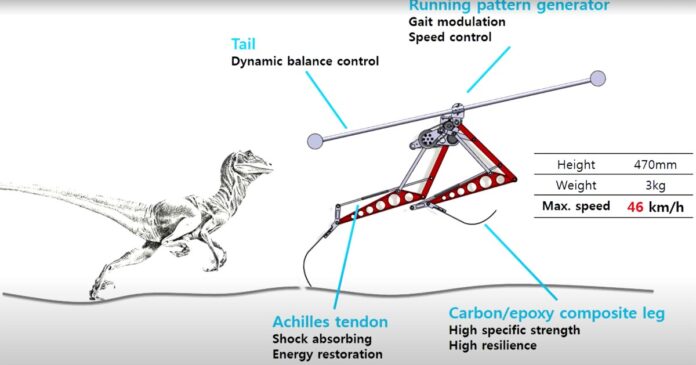Introduction to Fastest Robots
The fastest any human has ever run on record was Usain Bolt, who was clocked at an impressive 27.79 mph (44.72 km/h) when he ran a 9.58-second 100-meter dash. However, two-legged robots can run even faster, and their movements can be quite unusual to watch.
KAIST Raptor Robot
What sparked my interest in this topic was a 10-year-old video of a robot designed after a Velociraptor dinosaur by the Korea Advanced Institute of Science and Technology (KAIST), which is similar to the Massachusetts Institute of Technology (MIT). The aptly named KAIST Raptor robot weighs 6.6 lb (3 kg) and can sprint at an incredible 28.5 mph (46 km/h). It has a "tail" that helps with balance while running at full speed, even when obstacles are in its path. Although the "tail" doesn’t resemble a real ‘raptor tail, it’s actually a pole mounted to the side that acts as a counterweight to keep the robot upright.
Comparison with Other Robots
Given that the KAIST Raptor robot is tethered, it’s difficult to determine if it’s truly self-balancing as the researchers claim. The only robot to have run nearly as fast as the Raptor is Boston Dynamics’ Cheetah, which can reach speeds of 28.3 mph (45.5 km/h). However, the Cheetah is a 4-legged sprinter and is also tethered, so it doesn’t count in this comparison. For reference, an actual cheetah can run up to 70 mph (113 km/h).
Cassie and Hound Robots
In May 2022, Cassie the robot set a world record in the 100-meter dash with a time of 24.73 seconds, which is significantly slower than Usain Bolt’s record. While there’s no official recorded top speed of Cassie, the 100-meter time breaks down to an average speed of 9.06 mph (14.58 km/h). Later, in December 2023, another four-legged robot from KAIST called Hound beat Cassie’s record, running the 100-meter dash in 19.87 seconds and averaging 11.26 mph (18.12 km/h).
Unique Approaches to Robotics
The Achires running robot from Ishikawa Group Laboratory takes a unique approach to running, with a forward-leaning posture similar to a human. This robot is quite comical to watch and reminds me of Pitfall Harry at full speed. The Planar Elliptical Runner is another example of a self-balancing robot that uses only one motor and no computers. However, in the videos available, it seems to be aided by plexiglass walls that keep it upright, raising questions about whether it’s truly a robot or just a running machine.
Recent Advancements in Robotics
In the last 2-3 years, most research in robotics has focused on introducing AI technology and creating general-purpose and dynamic robots, such as the Unitree G1 or Boston Dynamics Atlas. While these robots are impressive, there’s still something to be said about achieving flat-out top speed. The Unitree H1, a general-purpose machine, recently set the record for the fastest humanoid robot at a speed of 7.4 mph (11.9 km/h), which is relatively slow compared to the KAIST Raptor robot.
Conclusion
Watching robots run and fall can be entertaining, and it’s amazing to see how far robotics have come in the last decade. From the KAIST Raptor robot to the Unitree H1, each robot has its unique features and abilities. As technology continues to advance, we can expect to see even faster and more agile robots in the future. Who knows, maybe one day we’ll have robots like Sonny the NS-5 from the movie I, Robot, sprinting down the street at 30-40 mph (48-64 km/h) and helping detectives solve mysteries. For now, we can enjoy watching these robots run, fall, and learn from their experiences.

